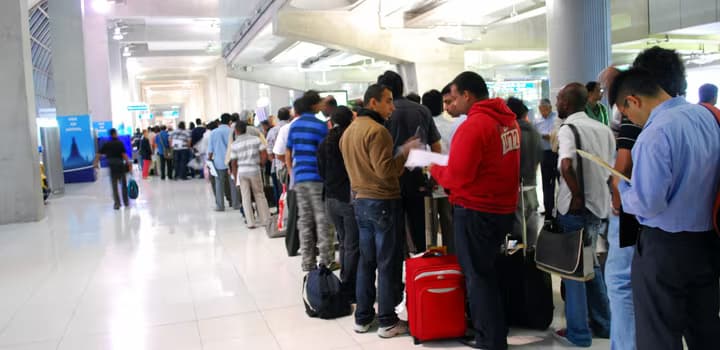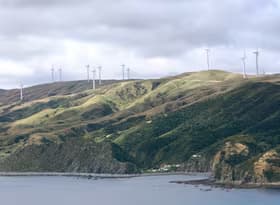Surprising strength in immigration given NZ economy’s weakness

Foreign citizen migrant arrival numbers over the past six months have started to trend upwards again, which is a surprising result given the state of New Zealand’s economy and labour market. This article examines the latest immigration trends, possible changes in the mix of workers coming over the border, and questions where migration might settle as the economy’s performance improves over coming quarters.
Below the post-COVID peak, but arrivals are still relatively high
March 2023’s peak monthly inflow of 22,700 foreign citizens was more than twice the pre-COVID record (discounting high arrival numbers in the second half of 2019, which were ultimately a result of COVID-19 as well, because people effectively got stuck here when the borders shut, and air connectivity was severely reduced). By August last year, arrival numbers had eased substantially, to 9,530 for the month.
Even so, Chart 1 reveals that the August 2024 figure was still high by historical standards. The average inflow of foreign citizens between 2015 and 2019, when immigration was understood to be high, was just under 9,000 per month.
It’s worthwhile remembering that in August last year, New Zealand was in the midst of its sharpest recession (ex-lockdown) since 1991, with the unemployment rate having risen from 3.4% to 4.8% since early 2023 (and with further rises to come). Yet foreign citizen arrivals were still higher than during the immigration boom during the second half of last decade. Since then, foreign citizen arrivals have rebounded to almost 12,600 in February 2025 – despite the fact that the unemployment rate has continued to rise and job numbers are still down 1.4% from a year ago.
We recognise that Stats NZ’s migration estimates can be subject to significant revisions, especially for the latest six months of data, as additional information on people’s movements becomes available. But putting any potential revisions to one side, the data begs the question: what are all these people coming into the country doing when they get here?
Understanding where there’s persistent demand for workers
We have dug into data from Traveller Declaration arrival forms1 across 97 occupational groupings and found that almost three-quarters of occupations are now recording lower arrival numbers than they were at their peak in the 2015-2019 period. Chart 2 shows the largest declines, representing a reasonably eclectic mix of occupations across construction, office administration, and lower-skilled childcare and health workers. Several of these occupations had also recorded a significant spike in arrivals during 2023 following the post-COVID border reopening – particularly for construction and some lower-skilled labouring and factory roles.
Of the remaining occupations, 16% are showing arrival numbers below their 2023 peak but above pre-COVID levels, 6% have been rebounding recently and are near record highs, and 3% have arrival numbers at record highs. Chart 3 shows selected occupations where arrival numbers are high compared to the second half of last decade, even if (for the last three in particular) arrivals are not as elevated as they were during 2023. There is something of a trend in these high-arrival occupations towards higher-skilled roles, with sales, health, and ICT well represented.
Further insights are available from MBIE Migrant Employment Data, which examines the make-up of the workforce by visa and residency status. Chart 4 shows selected industries where the current proportion of the workforce on work visas has lifted significantly from the average during the second half of last decade. Construction features prominently, although it is instructive that the proportions are levelling off or starting to turn down as activity in the industry contracts. Transport and logistics industries are also key contributors to a growing number of people on work visas, while the proportion of people on work visas working in hospitals seems likely to rise further given recent arrival trends.
If migration is strong now…
Although the mix of arrivals recently appears to have been changing in response to specific labour and skill shortages, it raises significant questions about future migration outcomes.
- If New Zealand can attract as many as 12,000 people per month when our economy is weak, how high might immigration levels be in future when labour market conditions are stronger?
- Will the general public be accepting of sustained high immigration again, given the strains that high migration placed on the housing market and infrastructure during the second half of last decade? This question is arguably even more pertinent now, given the clearer recognition of New Zealand’s infrastructure deficit, which has been building up for several decades.
- How is the government likely to approach immigration policy over the next 18 months, given the risk of disappointing economic growth results due to the international trade war and associated uncertainty? How tempting might it be to try and boost headline economic growth by allowing more immigration and pushing up population growth?
Our latest forecasts, published in mid-April, have seen us revise up our net migration projections by an average of almost 8,000 people per annum over the five years to June 2029. That broader outlook includes continued sizable outflows of Kiwis heading overseas to live, including to Australia. But there remains a considerable lack of clarity about where migration inflows might settle, and what a “normal” post-COVID level of immigration might be.
The implications of considerably higher-than-forecast immigration for the New Zealand economy could be significant – across growth in the labour supply, the economy’s potential growth rate, the need and incentive to achieve better productivity outcomes, demands on social and civil infrastructure, and underlying demand for housing.
For the construction industry, the latter two points are particularly important as the industry consolidates and adjusts its capacity to work with lower demand levels following the COVID-related boom. But having observed, throughout the last 25 years, the considerable effects that migration swings can have on construction activity, New Zealand seems to be no closer to pursuing a more stable or transparent immigration policy that might reduce some of the industry’s cyclicality.
1 This data is compiled on a different basis than the headline migration arrival and departure figures. The occupational figures will also include NZ citizens returning to this country after living overseas.
 Gareth Kiernan
Gareth Kiernan




